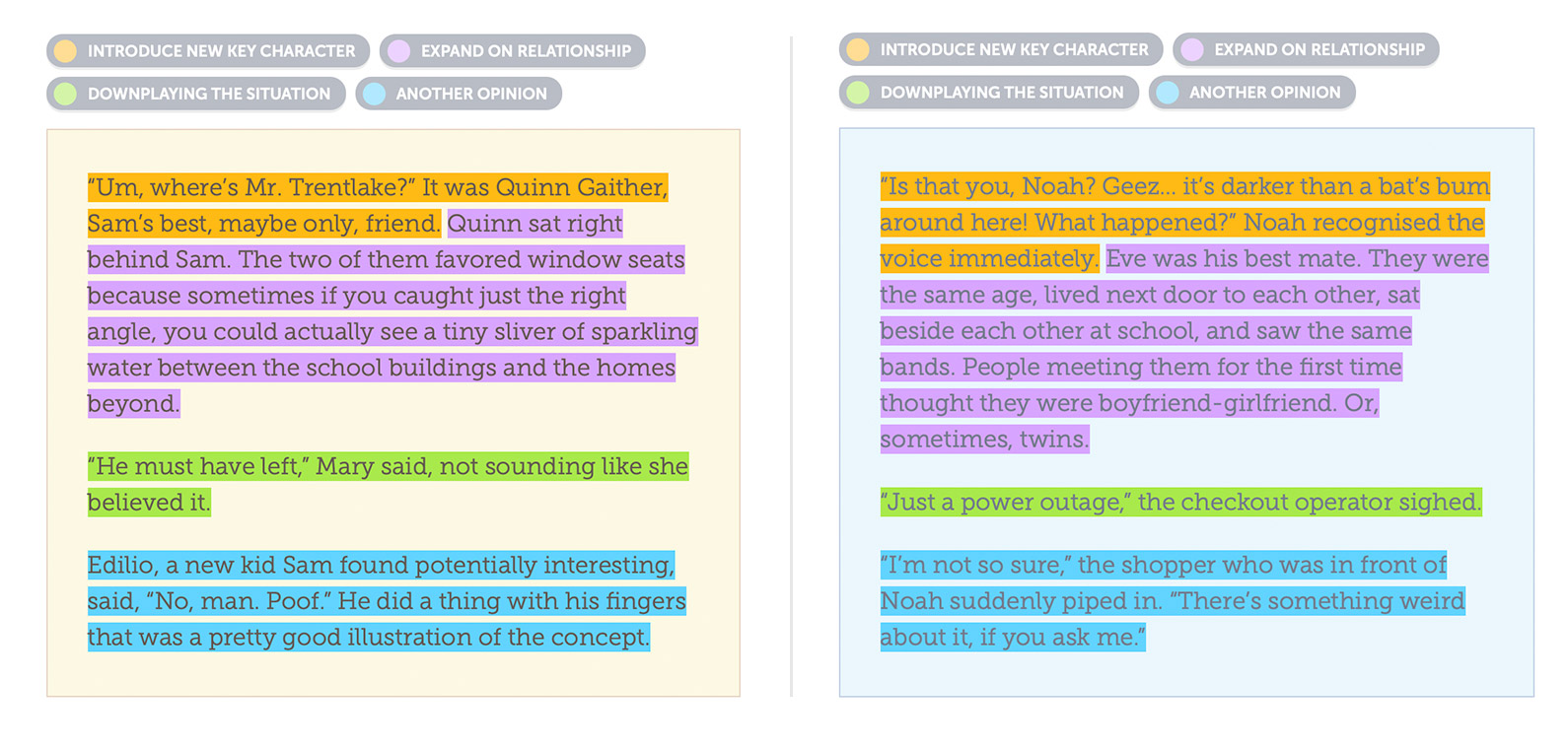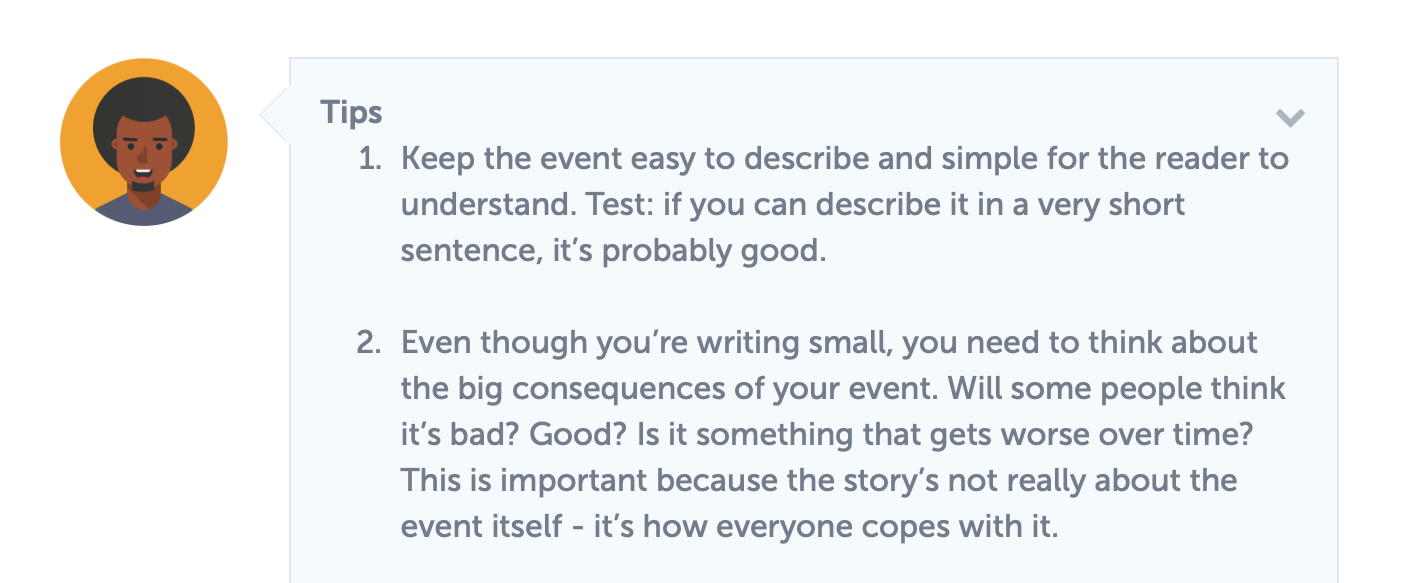We’ve published a new course as part of our Middle Years narrative writing collection.
High-concept storytelling in Gone is the first time we’ve tried daisy-chaining a series of project lessons together to form a sequence.
The course features six lessons that sample highlights from the opening chapter of Michael Grant’s uber-popular sci-fi/dystopia novel Gone:
- Big concept, small beginnings
- Meet the heroes
- Ramping up
- Speaking for the group
- Revealing the big picture
- Ending big, promising bigger
If students work through these lessons, they will have not a complete chapter but snapshots that outline a chapter from beginning to end.
What narrative text features do we cover?
Gone does not use complex language, so these lessons are not about clause and sentence-level craft. They are about narrative control and pacing (which are challenging in their own way).
Gone is great example of a high-concept story: an ordinary world, one twist, and now it’s extraordinary and we have to play out the consequences.
The opening chapter is a great example of setting up a large-scale story by starting small and then systematically expanding the field of vision: from one vanished teacher in one classroom to schoolwide riot.
So in this course we look at how these two ideas play out together: choosing a high-concept, then figuring out how to open a story with a controlled release of narrative information.
We also look at a secondary concept, which is the three-way party of heroes trope (the act-think-feel character triangle) common to many adventure stories. We use the Gone template as a way to explore why this combination is so popular, and how it lets authors add dimension to a story while also advancing the plot.
Because we focus on these macro-structural components, these lessons follow a linear sequence and might not make much sense in isolation. So if you want to try one, start at the beginning!
Who is this course for?
We’ve tagged this course as Middle Years, but it would suit a wide age-range. The audience for Gone skews towards the younger years, but it’s such a challenge to construct a narrative that fits given pacing constraints that younger students might find this a little overwhelming.
As always, it comes down to your read of your students, but we’d suggest that this course suits Grade 7 and up.
If you are working with younger students, then reinforce that it’s fine if their narrative doesn’t entirely hang together as they write piece to piece. If students reach an activity where their story doesn't work with the scaffolding , tell them it’s better to tweak the story and fit the scaffolding rather than go off in their own direction—they can have more freedom in their portfolio piece, or in a summative assessment in class.
(Our example rewrites hang together, but we had to go back and revise them continually in order to create that coherence. We couldn't pull it off the first time round, and we knew what was coming up. So there's very little chance students will be able to pull it off.)
Overall
This is a great course for thinking about story concepts, structure, pacing and world-building. But it is challenging, and it’s the first time we’ve done a sequence with so many narrative dependencies. We have a few more of these coming out, so let us know how it works for you.



